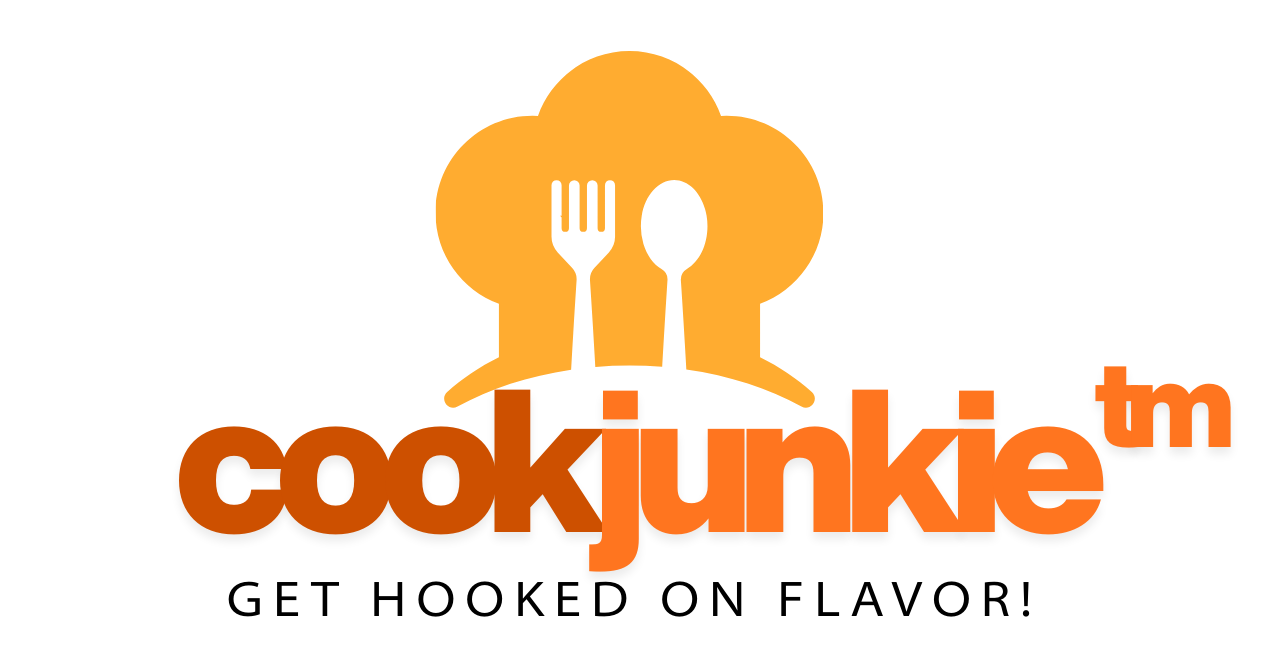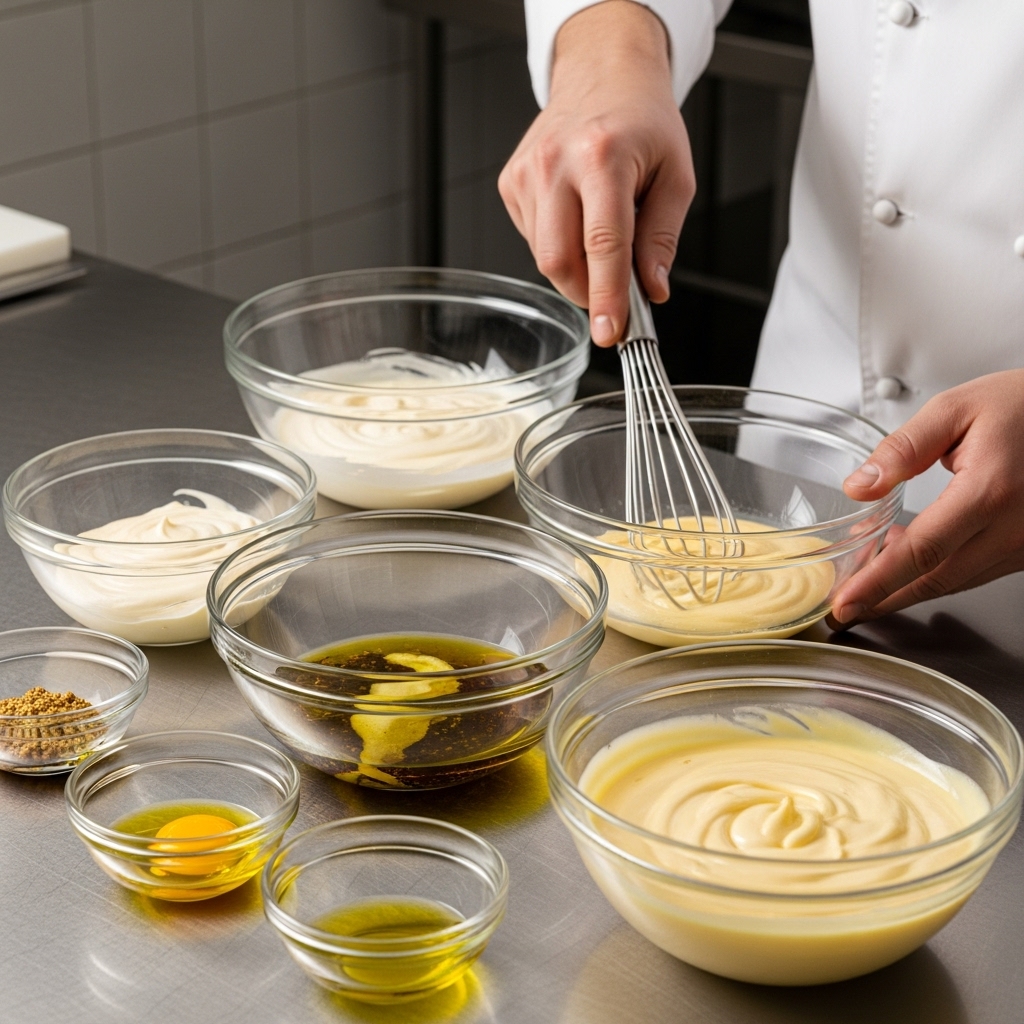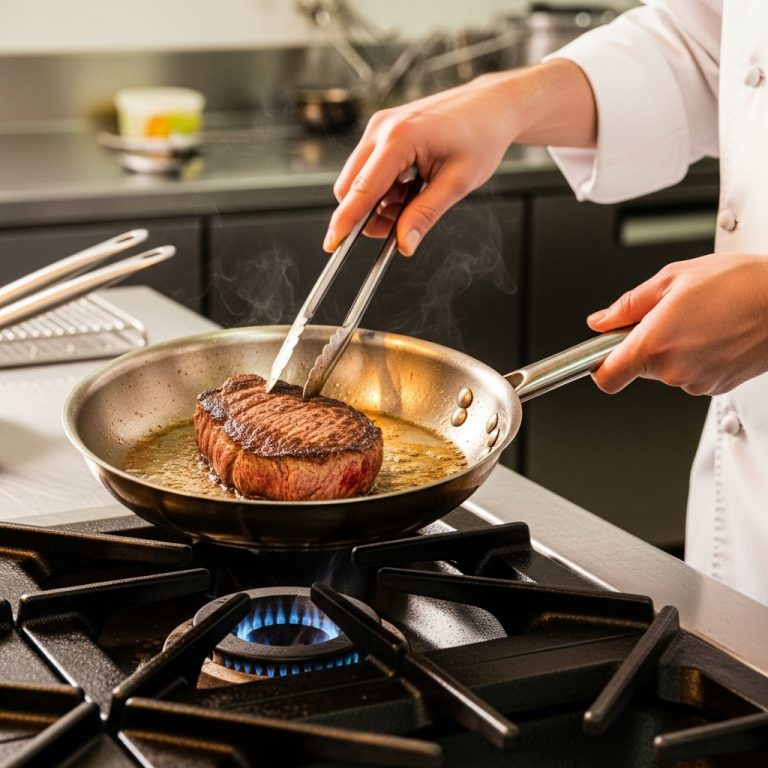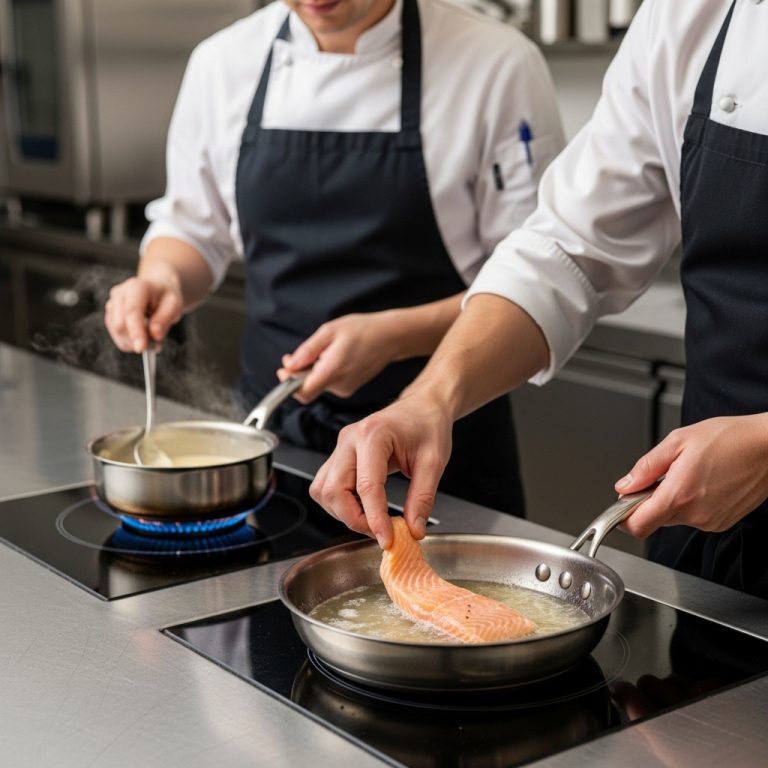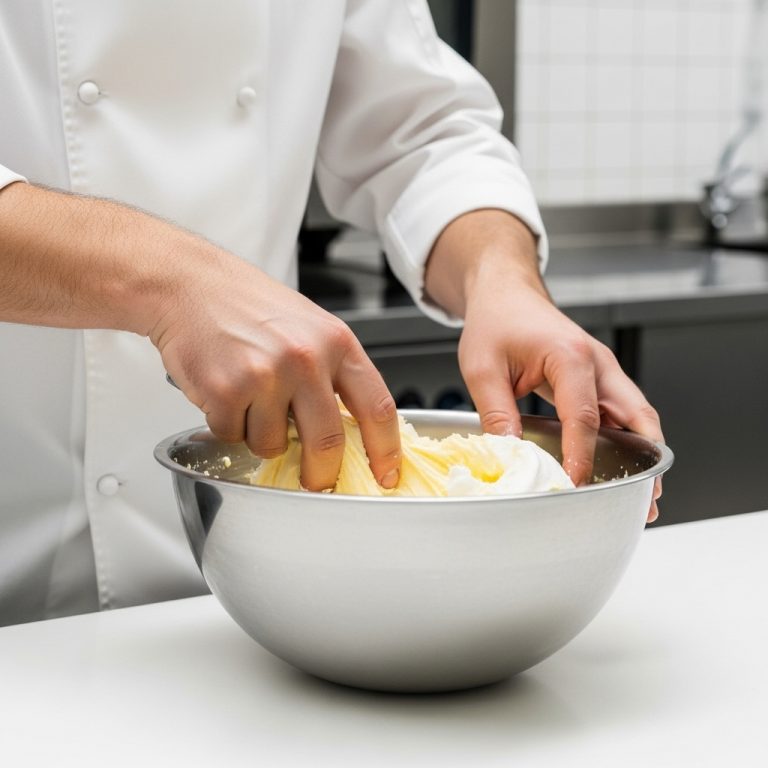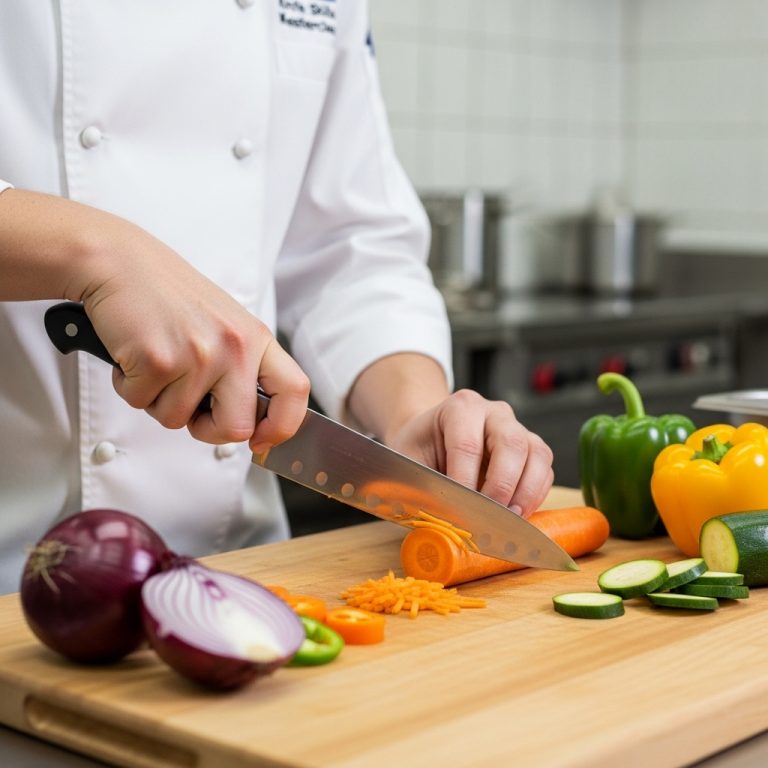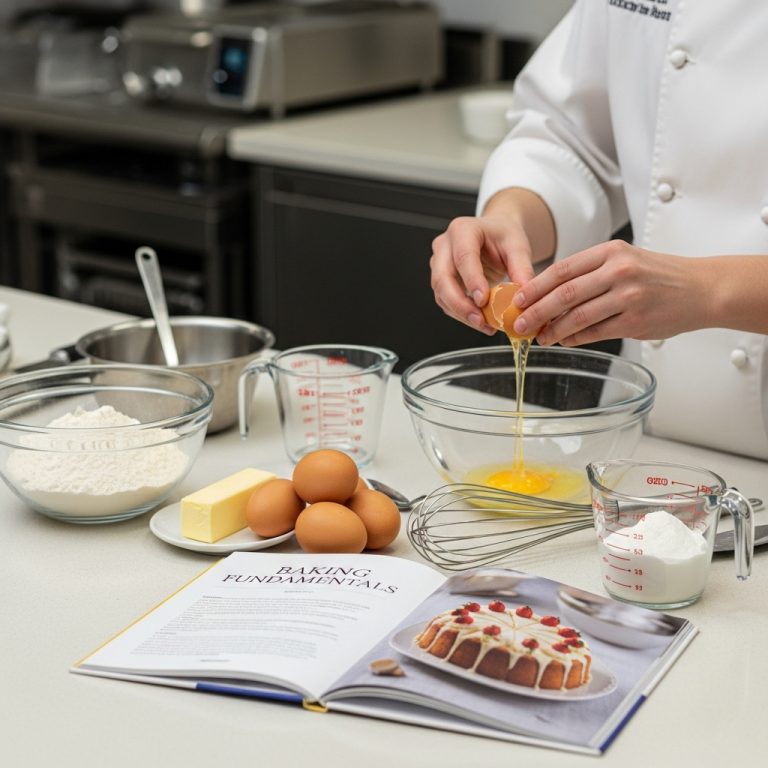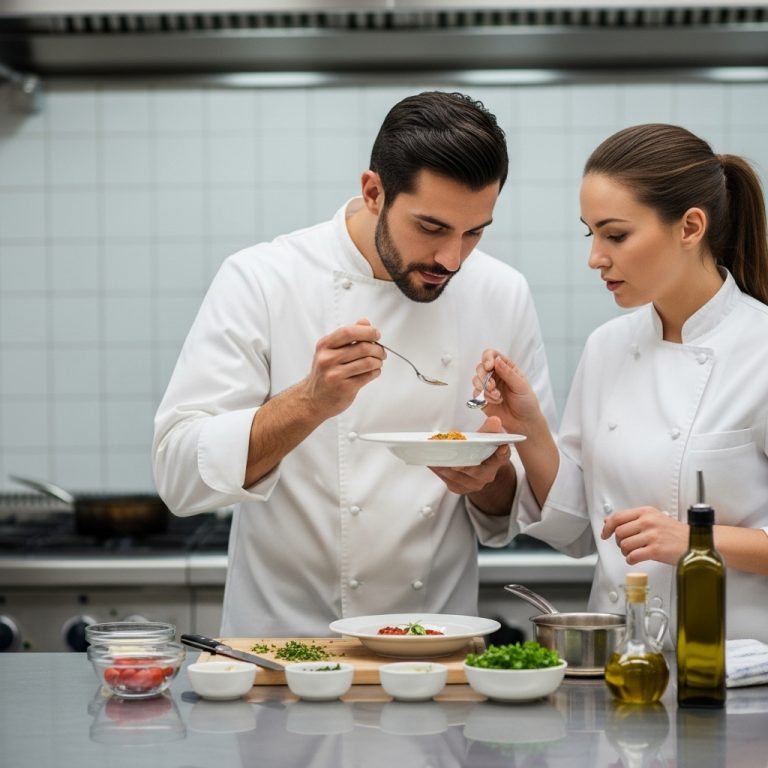Emulsions and Dressings
Lesson Title: Emulsions and Dressings
Objective: By the end of this lesson, students will be able to understand the concept of emulsions, create various types of dressings using emulsification techniques, and apply these skills in their own cooking.
Core Concept: An emulsion is a mixture of two immiscible liquids (liquids that do not mix well) that have been combined together, often with the help of an emulsifier. In this lesson, we will focus on creating mayonnaise and vinaigrette, which are both types of dressings made using emulsification techniques.
Tools & Setup:
1. Blender or whisk
2. Measuring cups and spoons
3. Bowls
4. Vinegar, lemon juice, mustard (for vinaigrette)
5. Eggs, oil (for mayonnaise)
6. Seasonings (e.g., salt, pepper, garlic powder, onion powder)
Step-by-Step Practical:
1. Mayonnaise:
a. In a bowl, crack two eggs and separate the yolks from the whites. Discard the egg whites or save them for another recipe.
b. Add 2 cups of oil (vegetable, canola, or any neutral-flavored oil) to a measuring cup with a spout.
c. In the blender or using a whisk, start mixing the egg yolks until they become creamy and light yellow in color.
d. While continuously blending or whisking, slowly drizzle the oil into the egg yolks. Start with just a few drops, then gradually increase the flow to a thin stream. The key is to add the oil very slowly and consistently.
e. Once all the oil has been added, the mayonnaise should be smooth and creamy. Season with salt and pepper to taste. Store in an airtight container in the refrigerator until ready to use.
2. Vinaigrette:
a. In a small bowl, combine 1 tablespoon of mustard, 2 tablespoons of vinegar (red wine or white wine), and 1 teaspoon of lemon juice.
b. Gradually whisk in 6 tablespoons of oil while continuously mixing until the vinaigrette is emulsified and smooth.
c. Season with salt, pepper, garlic powder, onion powder, or any other desired seasonings. Taste and adjust as needed.
d. Store in an airtight container in the refrigerator until ready to use.
Culinary Science Insight: Emulsification is the process of combining two immiscible liquids by using an emulsifier (such as egg yolks or mustard) that helps to stabilize the mixture and prevent separation. In mayonnaise, the oil and egg yolk create an emulsion when mixed together with a slow, steady stream of oil. The vinaigrette is created through a similar process, but with vinegar and oil instead of egg yolks.
Pro Tips & Variations:
1. Mayonnaise can be flavored with herbs, spices, or other ingredients to create various types of sauces, such as garlic aioli, sweet chili sauce, or sriracha mayonnaise.
2. Vinaigrette can be modified with different vinegars, citrus juices, or additional seasonings to suit your taste preferences or recipe requirements.
Homework / Practice: Create your own version of mayonnaise or vinaigrette by incorporating different flavors and seasonings. Share your creation with the class during the next lesson.
Reflection: Reflect on the process of emulsification and how it applies to both mayonnaise and vinaigrette. Consider how this technique can be applied to other recipes, and think about ways you could further experiment with flavors and ingredients in future culinary endeavors.
